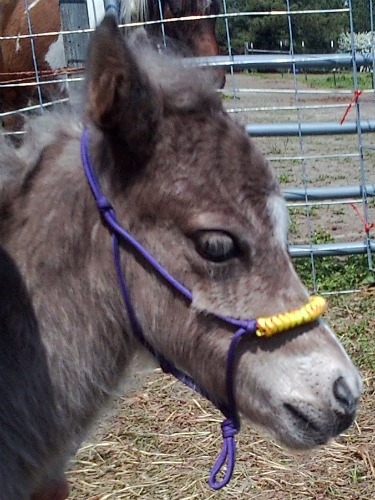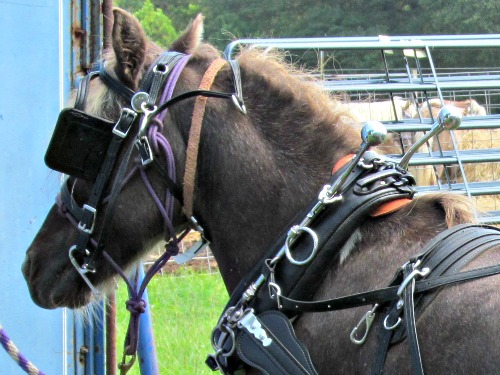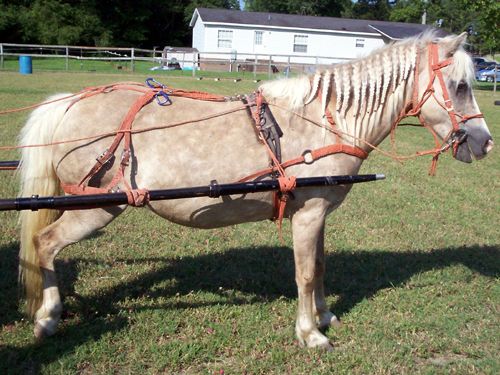I'm glad I read through the whole thread before asking what, exactly, a gullet strap is meant to do.
After reading different replies, I think I will continue to do what I already do on my "headshakers" (I have had one driving bridle literally shaken off - the throatlatch was snug and it had a real cavesson that was also pretty tight. Never expected it to come off). If I find that i have a head shaker (have one now again - trying different bits as vet says her teeth/mouth are fine), I leave one of my collars on the pony (that they all have on out in the pastures) and tie the crown to it. At a Draft Horse function or parade, I can use a black zip tie or dog collar or even the shoe laces (that I now carry in my tool box) and attach the crown to the collar. For trail driving or training at home, I use the ubiquitous haystring!
I also use bailing twine. I made a 4-strand round braid with loops on either end so it can either stay on the bridle when I unbuckle caveson and throat (which I rebuckle just to keep it from getting lost) or can simply be slid back on. So far I have lost about 4 of them (which is why I now rebuckle) but since they cost nothing, and only take about 15 minutes to make, I don't care. I did get a dog collar to make a dressier gullet strap for competition, but since I like to toss the guys in the trailer and take to the trails - and I tend to lose them when coming home, I decided the bailing twine ones were all I could be trusted with for casual.
I do a lot of braiding myself. I have no problems doing the fist loop when starting a braid. Can you tell me how you get your 2nd loop at the end? Currently I've done one (with a 4 strand braid) and I basically brought the end around to make a loop, used a needle to draw the individual 4 strands back thru the braid, then braided over the braid until I was ready to stop and then refed the ends thru the braid to hold and cut... Not as nice as I would like it to look, but it was haystring, so...
I'm also braiding in paracord now and actually knowing how to do a 2nd loop would be nice! If you need to PM me, do or you can send to my email -
[email protected].
As to halters under the bridles - most of my harness is work style and have no cavesson and only the 1/2 nose attached at the bit buckle. A light weight mini halter does fit under my bridles and i currently have a bunch of those (just bought a boxfull in a lot from someone going out of business). BUT as they wear out, I replace them with no hardware, tied halters - which fit AWESOME under the driving bridles. You do need to use one of the off brand ones that are much lighter, less stiff or make one out of paracord (I also braid out of haystring - 4 and 6 strand - then tie my own halters). You do have to check - some of the tied halters have too much space and can get caught - on the shafts, on the neckyoke when driving a pair or on brush and trees while trail driving.
A halter tied out of unbraided paracord is too thin for regular tie-ing (imo) - but works for under a bridle during functions and parades. Can add a little bit of "bling" or "dress" - but at home or in/at the trailer, I want a little more substance to keep from cutting into the poll if one does pull back.
Here is one of my foal halters made from unbraided paracord. The foal
does not get tied in these halters.
And here is a CA tied halter. I watch carefully, as sometimes that knot on the side of the nose is too big. I make sure the bridle cheekstraps are slightly looser so that there isn't any pressure applied to the knot. I also adjust the halter up/down so that the knot is clear of the noseband. I haven't had any problems with this arrangement - but a friend of mine used a different halter w/ stiffer rope and larger knots. I don't think the headstall was loosened at all, but not sure. The knots lierally made "holes" in the side of her mare's head during a two hour trail drive that she then had to treat (both sides)... She no longer uses tied halters under the bridles but has had issues with the nylon ones under them too (she uses the heavier duty halters that are thick...
. So pro and con either way...).
and here is one of my own tied halters under a bridle. I don't have just a head shot that I can find. And yes, most of the harness is braided out of haystring as well. I know that the breast collare was sitting too high (had accidentally brought the wrong one with me that day & since 20 miles from home and only driving in an arena on the flat, wasn't too worried about it) and that the surcingle used as a "saddle" wasn't appropriate... used that day and sometimes at home for training. Not generally used for longer drives...






